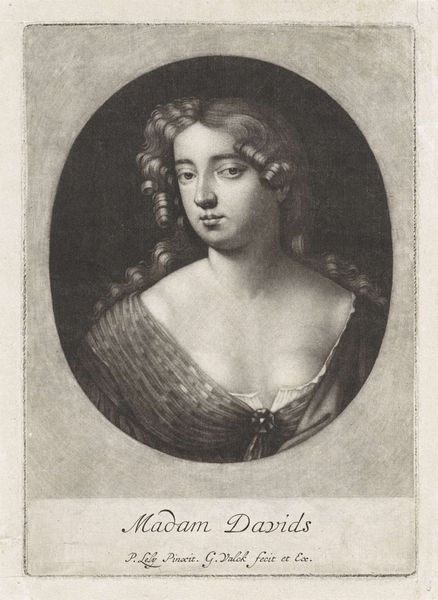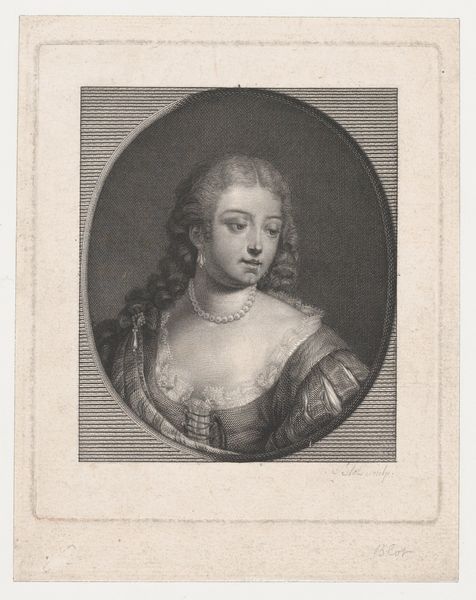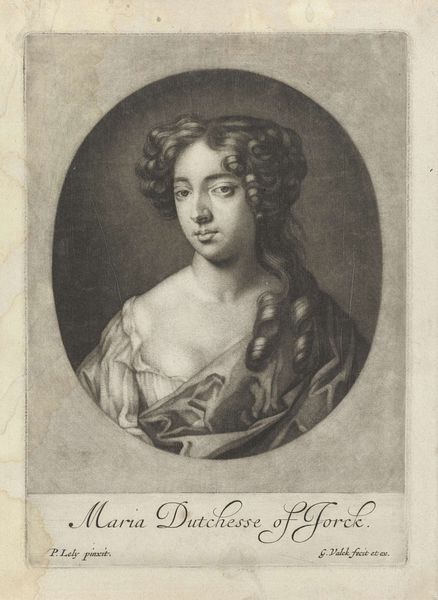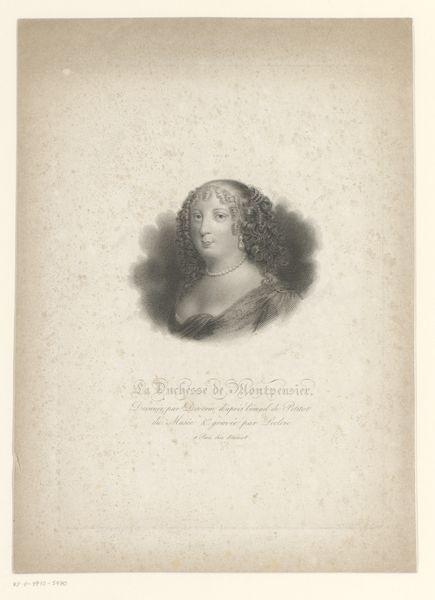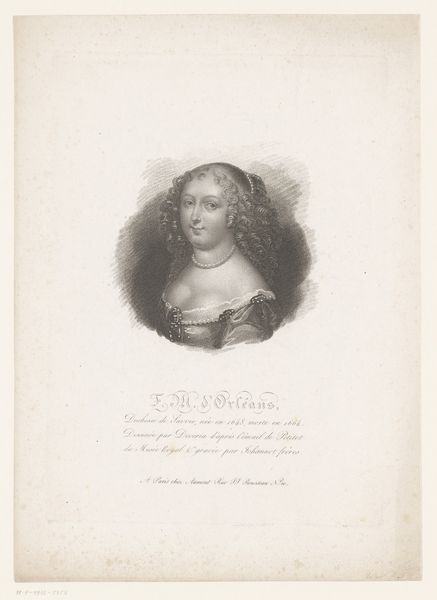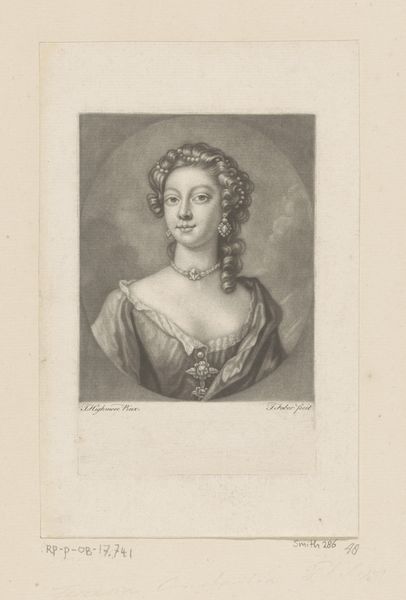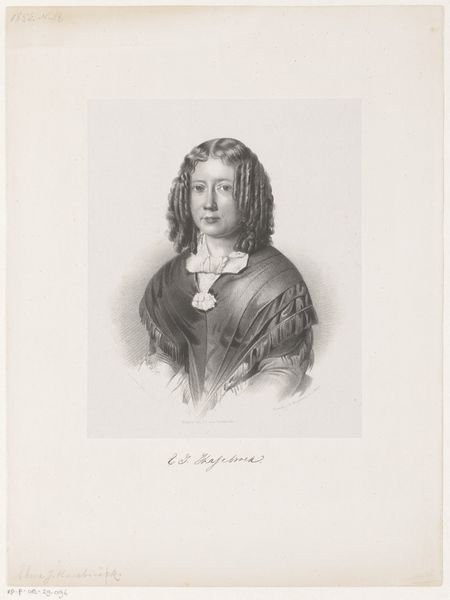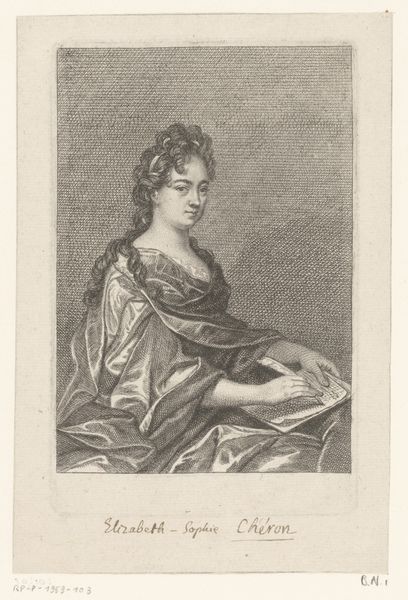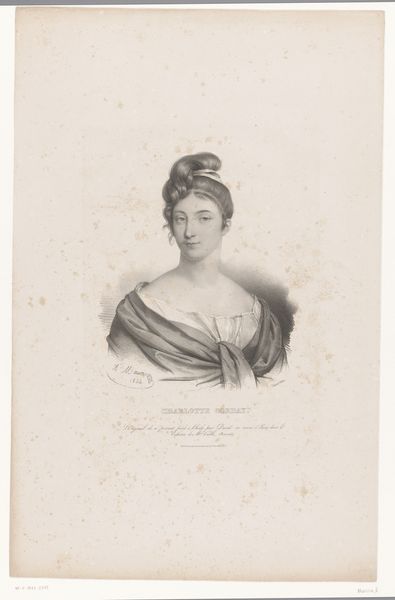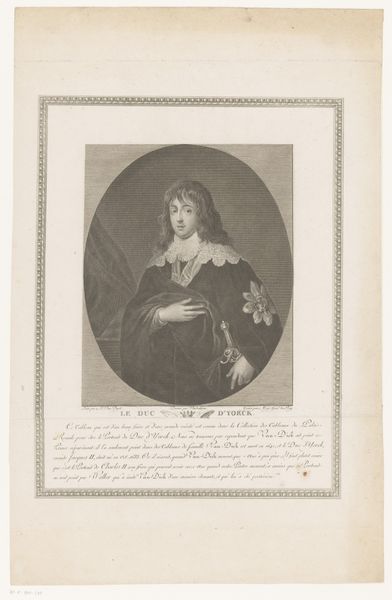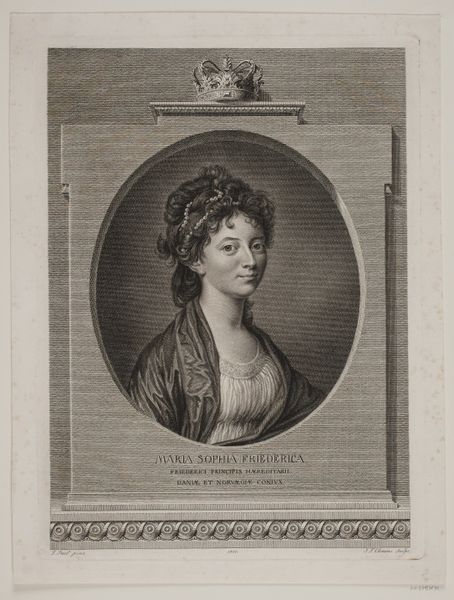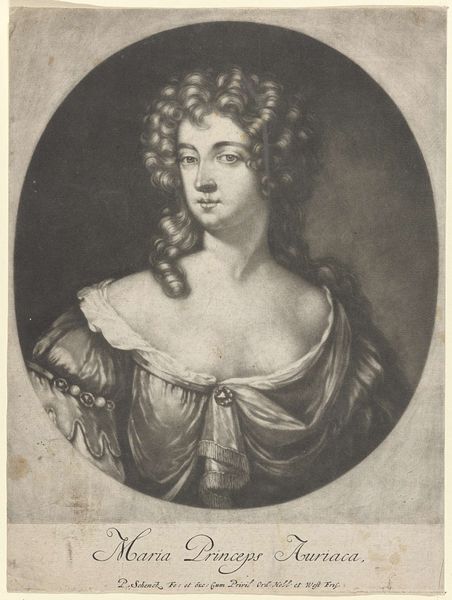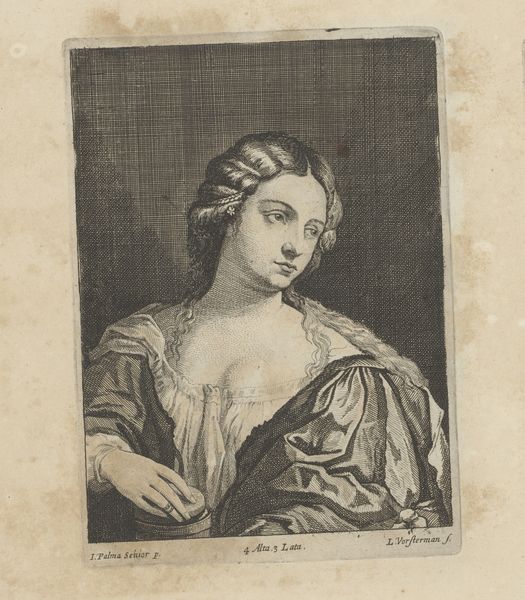
print, engraving
#
portrait
#
neoclacissism
#
aged paper
# print
#
pencil sketch
#
old engraving style
#
line
#
engraving
Dimensions: height 274 mm, width 180 mm
Copyright: Rijks Museum: Open Domain
Editor: This engraving, "Portrait of Françoise-Marguerite de Sévigné, Countess of Grignan," was created by Nicolas Maurin sometime between 1825 and 1842. It reminds me of illustrations in history books, with delicate lines and an aged feel. How do you interpret this work? Curator: What strikes me is the subtle yet pervasive encoding of class through the very image. Notice the carefully rendered curls, the ornate lace, the posture itself. These aren't just aesthetic choices; they're deliberate signals to the viewer, embedding cultural memories of nobility and refinement. Do you see how the gaze, though soft, suggests a certain knowing, almost a power held in reserve? Editor: I do. It’s as if she understands something we don't. I suppose that’s part of what gives the portrait its air of sophistication. Were there specific symbols often associated with nobility during that period? Curator: Absolutely. While not overtly symbolic in a heraldic sense, the clothing, the hairstyle, the very *whiteness* of the print medium itself contributes. Lightness was often associated with purity and elevated status. Also, consider what this image *isn't*. It’s not overtly religious; power isn't justified through divine right, but rather through inherited social standing. That's quite telling about the evolving times. Editor: So, it's more subtle than crowns and scepters. More about projecting an aura of distinction through refined taste? Curator: Precisely. Think of it as a cultural script being visually performed. Maurin captures not just a likeness, but the very essence of a social role being played out. Editor: It’s amazing how much a simple portrait can communicate. Thanks, I never thought about it that deeply before. Curator: And that's the power of images, isn't it? They hold so much more than meets the eye. This has been enlightening.
Comments
No comments
Be the first to comment and join the conversation on the ultimate creative platform.
